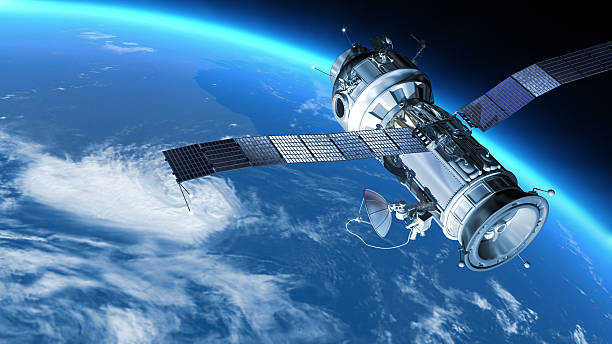The Future of Space Exploration: Advancements, Challenges, and Possibilities

Strong 8k brings an ultra-HD IPTV experience to your living room and your pocket.
Space exploration has always pushed the boundaries of human knowledge and capability. From the first Moon landing in 1969 to the ongoing robotic missions on Mars, each achievement brings us closer to understanding the cosmos and our place. As we enter a new era of space travel, the next few decades promise unprecedented discoveries, technological advancements, and the possibility of human settlements beyond Earth. With private companies revolutionizing space travel, governments investing in deep-space exploration, and international collaborations shaping policies, the future of space exploration is brighter than ever.
The Rise of Private Space Companies
For decades, space exploration was solely driven by national agencies like NASA (United States), Roscosmos (Russia), and the European Space Agency (ESA). However, private aerospace companies have now been leading in the industry.
SpaceX, founded by Elon Musk, has developed reusable rockets such as Falcon 9 and Starship, significantly reducing launch costs and making space travel more sustainable. Blue Origin, owned by Jeff Bezos, is focusing on space tourism and reusable launch systems like New Shepard and New Glenn. Rocket Lab specializes in small satellite launches, while companies like Axiom Space and Sierra Space are developing commercial space stations that could replace the International Space Station (ISS) in the future.
The growing involvement of private companies has made space more accessible, with an increasing number of commercial missions planned for tourism, satellite deployment, and interplanetary exploration.
The Return to the Moon: Artemis and Beyond
The Moon is once again a major focus for space agencies worldwide. Unlike the Apollo missions, which were short-term visits, new programs aim to establish a sustainable human presence on the lunar surface.
NASA’s Artemis program is leading the way, with plans to land the first woman and person of color on the Moon, build a lunar base, and use the Moon as a stepping stone for Mars missions. The Lunar Gateway, a planned space station in orbit around the Moon, will serve as a hub for deep-space exploration. The Artemis Accords, signed by multiple nations, promote peaceful cooperation in lunar exploration.
China and Russia are also planning their lunar missions. China’s Chang’e program has already retrieved lunar samples, and the country plans to build an International Lunar Research Station by the 2030s. Russia is collaborating on this project and developing its own Moon missions.
A key reason for renewed interest in the Moon is the discovery of water ice in its polar craters. This ice could be converted into drinking water, oxygen, and even rocket fuel, making the Moon a critical outpost for future space exploration.
Mars: The Next Giant Leap
Mars remains the ultimate goal for human exploration due to its similarities to Earth and the potential for colonization. Several ongoing missions are already gathering data to prepare for future human landings.
NASA’s Perseverance rover is searching for signs of past life and collecting samples for a future return mission. China’sTianwen-1 mission, which includes an orbiter and a rover, is also exploring the Martian surface. The European Space Agency (ESA) is planning the ExoMars mission, which will drill beneath the planet’s surface to search for microbial life.
Future human missions to Mars are expected by the 2030s. NASA plans to send astronauts using technologies tested during the Artemis program. SpaceX’s ambitious Starship project aims to carry humans to Mars, with Elon Musk envisioning a self-sustaining colony on the planet.
However, colonizing Mars comes with significant challenges. The planet has a thin atmosphere that offers little protection from harmful radiation. Harsh climate conditions, including dust storms and freezing temperatures, pose additional risks. Scientists are working on solutions such as underground habitats, radiation shielding, and sustainable life support systems to ensure long-term human survival.
The Development of Space Habitats
Long-duration space missions require sustainable living conditions. The ISS has provided valuable insights into human health in microgravity, but future missions will need more advanced space habitats.
Several new space stations are in development. The Lunar Gateway will support deep-space missions, while China’s Tiangong space station is expected to expand with more research modules. Axiom Space is developing a commercial space station to replace the ISS after 2030.
Advancements in technology will play a crucial role in space-based living. 3D printing will allow astronauts to create tools and build habitats using local materials. Artificial gravity concepts, such as rotating space stations, could reduce the negative effects of microgravity on the human body. Hydroponic and aeroponic farming will be essential for growing food in space, ensuring a self-sustaining ecosystem for long-term missions.
The Search for Extraterrestrial Life
One of the most exciting aspects of space exploration is the search for extraterrestrial life. Scientists believe that microbial life may exist in our solar system or beyond.
Mars is a primary target, as evidence suggests it once had liquid water. However, other celestial bodies may also harbor life. Jupiter’s moon Europa has a subsurface ocean that could contain hydrothermal vents, similar to those on Earth that support deep-sea life. Saturn’s moon Enceladus has geysers that eject water vapor, suggesting the presence of an underground ocean.
Beyond our solar system, the James Webb Space Telescope (JWST) is studying exoplanets to identify potentially habitable worlds. NASA’s upcoming Europa Clipper mission will study Europa’s ice shell, while the Dragonfly mission to Saturn’s moon Titan will explore its methane lakes, which could support unique forms of life.
Advances in Space Technology
New technologies will make space exploration safer, faster, and more efficient.
Nuclear propulsion is a promising development that could reduce travel time to Mars from nine months to just three months. Artificial intelligence (AI) and robotics are being used for autonomous spacecraft navigation, space debris removal, and rover operations. Quantum communications could enable secure and instant space transmissions, while space-based solar power could provide energy for Earth and space missions.
International Collaboration and Space Policy
As space exploration expands, international cooperation and regulations will be essential to maintaining peaceful and sustainable development.
The Artemis Accords provide a framework for lunar exploration, ensuring that countries collaborate rather than compete. The Outer Space Treaty of 1967 remains a foundational agreement that prohibits the militarization of space and ensures that space remains accessible to all nations.
Managing space debris is another pressing issue. Thousands of defunct satellites and fragments pose risks to active missions, prompting agencies to develop strategies for space cleanup and collision prevention.
More countries are actively participating in space exploration. India’s ISRO has conducted lunar and interplanetary missions and is planning a space station. The United Arab Emirates successfully sent the Hope Probe to study Mars. African nations are also developing space programs, focusing on satellite technology and scientific research.
Note: IndiBlogHub features both user-submitted and editorial content. We do not verify third-party contributions. Read our Disclaimer and Privacy Policyfor details.


